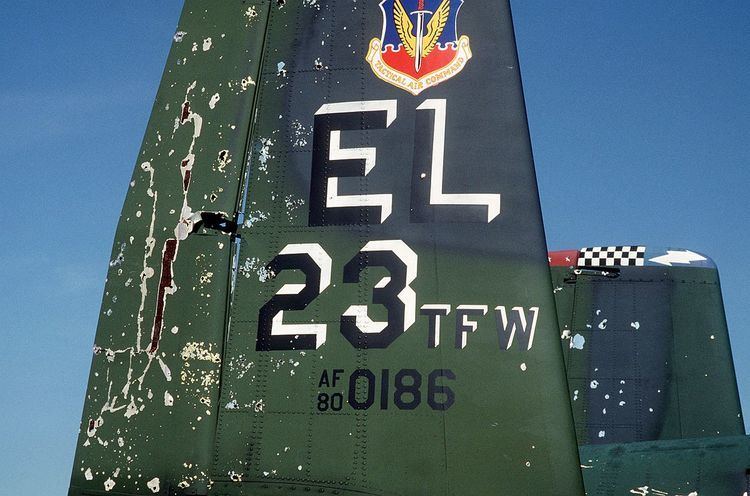Country United States Engagements World War IIIraqi War | ||
 | ||
Active 17 December 1941–present Branch | ||
The 76th Fighter Squadron is a United States Air Force Reserve unit. It is assigned to the 476th Fighter Group and stationed at Moody Air Force Base, Georgia.
Contents
During World War II, the 76th Fighter Squadron was one of the three original squadrons (74th, 75th, 76th) of the 23d Fighter Group.
World War II
The history of the 76th dates to the earliest days of World War II. During the summer of 1941, Claire Lee Chennault formed a small group of American pilots into three fighter squadrons, the American Volunteer Group, of the Chinese Air Force. The unit immediately garnered international attention for their combat successes while defending China and Burma, and they became known as the "Flying Tigers." Some members of the AVG joined or rejoined the United States Air Force after the AVG was disbanded.
The 76th squadron remained in combat in the China-Burma-India (CBI) Theater from 18 July 1942 to 11 August 1945, earning a Distinguished Unit Citation for missions in China in June 1944.
Cold War
After World War II, the squadron performed air defense intercept operations in Guam, 1946–1949, in Panama, 1949, and at various bases in the eastern United States, 1955-1963.
By 1960 the squadron was stationed at McCoy Air Force Base, Florida. In 1960, "in order to position its diminishing interceptor force as nearly astride enemy approaches as possible", Air Defense Command received approval to move the squadron from McCoy to Westover Air Force Base in Massachusetts. It disposed of its Northrop F-89 Scorpions by the end of 1960. Between February and April 1961, the squadron had re-equipped with Convair F-102 Delta Daggers. Following the Cuban Missile Crisis, the Air Force decided to station a full squadron of interceptors at Homestead Air Force Base, Florida. This squadron was to be equipped with F-104A Starfighters, but the Air Force had transferred all its F-104 interceptors to the Air National Guard. F-104s were withdrawn from the 159th Fighter-Interceptor Squadron of the South Carolina Air National Guard and sent to Homestead. In turn, the F-102s at Westover were used to re-equip the 159th and the 76th was inactivated.
The squadron trained in and conducted close air support operations, 1972-1992. A portion of the squadron deployed to Saudi Arabia in 1990 and took part in operations against Iraq in early 1991.
Space Operations era
Lessons from Desert Storm on space power convinced Air Force leaders to reactivate the squadron as the 76th Space Operations Squadron in December 1995. The squadron was activated at the National Test Facility at Falcon Air Force Base, Colorado as a component of the 14th Air Force on 1 December 1995.
The mission of the 76th SOPS was to assist air component commanders in understanding and applying space systems in support of air operations. The unit's aim was to ensure that command and control, communications, weather, navigation, and other space assets were used to most effectively multiply US and allied combat forces capabilities against an adversary.
The 76th deployed Air Force Space Support Teams to bring "space expertise" to expeditionary air forces and air operations centers around the world. Over their tenure, the 76th Space Operations Squadron deployed to make significant contributions during Operation Joint Endeavor, Operation Deny Flight, Operation Desert Fox, Operation Desert Thunder, and Operation Allied Force. It was inactivated in 2008 and its place taken by a newly constituted unit with the same designation in preparation for
Reborn Fighter Squadron
In 2009, the squadron was redesignated 76th Fighter Squadron and moved to Moody Air Force Base, Georgia, while
